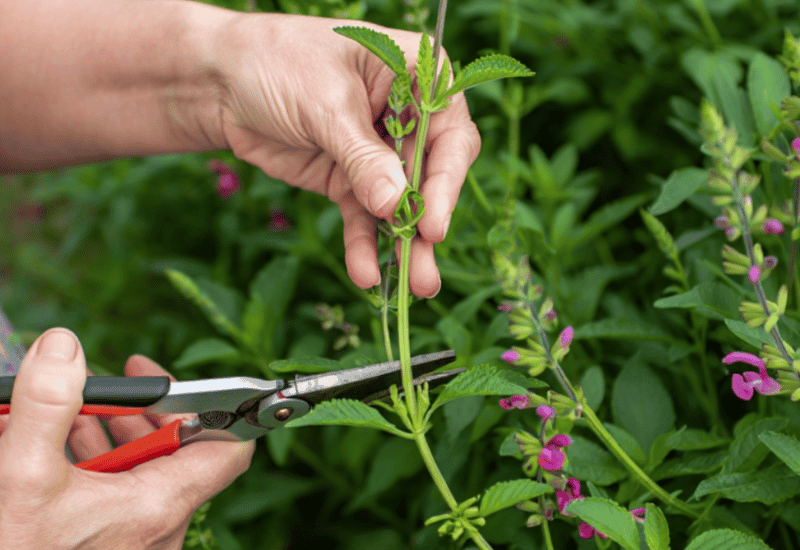
There’s something endlessly rewarding about taking a simple stem cutting and knowing it can grow into a whole new plant. No matter how many times I do it, it still feels like a small miracle. And September, balanced right between summer’s end and the first hint of fall, is one of the very best times to make it happen.
I always think of this month as a gardener’s moment to prepare. Frost isn’t far off, and while some plants might not survive outside, a tray of cuttings in pots is far easier to protect. For me, it’s not just about saving plants like pelargoniums from winter losses—it’s also about multiplying the flowers I love most. Penstemons, salvias, fuchsias… I take cuttings now so that when spring arrives, I already have a head start.
So if you’ve been meaning to get ahead for next season, now’s the moment. Here are ten flowers worth taking cuttings from in September—your late-summer ticket to a garden full of free, home-grown beauty next year.
Can You Really Take Plant Cuttings in September?
Yes—you definitely can, and in fact, September is one of the best months to do it.
By this time of year, the season’s growth has reached that in-between stage gardeners call semi-ripe or semi-hardwood. The lower part of the stem has started to harden, while the tips are still soft and green. This balance makes September cuttings particularly successful—they’re sturdy enough to handle, but still young enough to produce roots without too much fuss.
Of course, the challenge is always moisture. Most failures come from either keeping cuttings too wet, which leads to rot, or letting them dry out completely. September offers an advantage here: the cooler days and gentler sun mean it’s easier to keep the compost evenly damp without constant monitoring.
10 Plants to Start Propagating from Cuttings This September
If you’re looking to stretch your garden without stretching your budget, September is the perfect month to do it. Here are 10 of my favorite shrubs and perennials that I never miss propagating at this time of year.
1. Pelargoniums
If there’s one plant I can’t resist taking cuttings from in September, it’s pelargoniums. They’re tender by nature, and in most regions, they won’t make it through winter outdoors. Rather than risk losing them, I like to start a batch of young plants now—it’s far easier to overwinter small pots than to haul in big containers once the frost sets in.
Lately, I’ve been especially fond of Pelargonium ‘Attar of Roses’, a scented-leaf type with soft, deeply cut foliage and a lovely rose fragrance. It’s not just beautiful on the patio, but the leaves are wonderful for potpourri, too.

To propagate it, I snip a short piece—three or four inches long—from a sturdy, non-flowering shoot. With a quick trim below the node and the lower leaves removed, the cuttings root quickly, especially if I use a gritty mix.
The trick is not to drown them. Pelargoniums hate sitting in soggy compost, so I stick to a light, free-draining soil and give only a small splash of water now and then. With that little bit of care, the cuttings will settle in nicely and be ready to take off once spring returns.
2. Verbena
Verbena is one of those plants that quietly earns its place in the garden year after year. Tall, airy stems topped with clusters of blooms bring in bees and butterflies right through the late season. One variety I’ve come to love is Verbena rigida, which stays lower and bushier than Verbena bonariensis but offers the same haze of purple flowers in summer and fall.
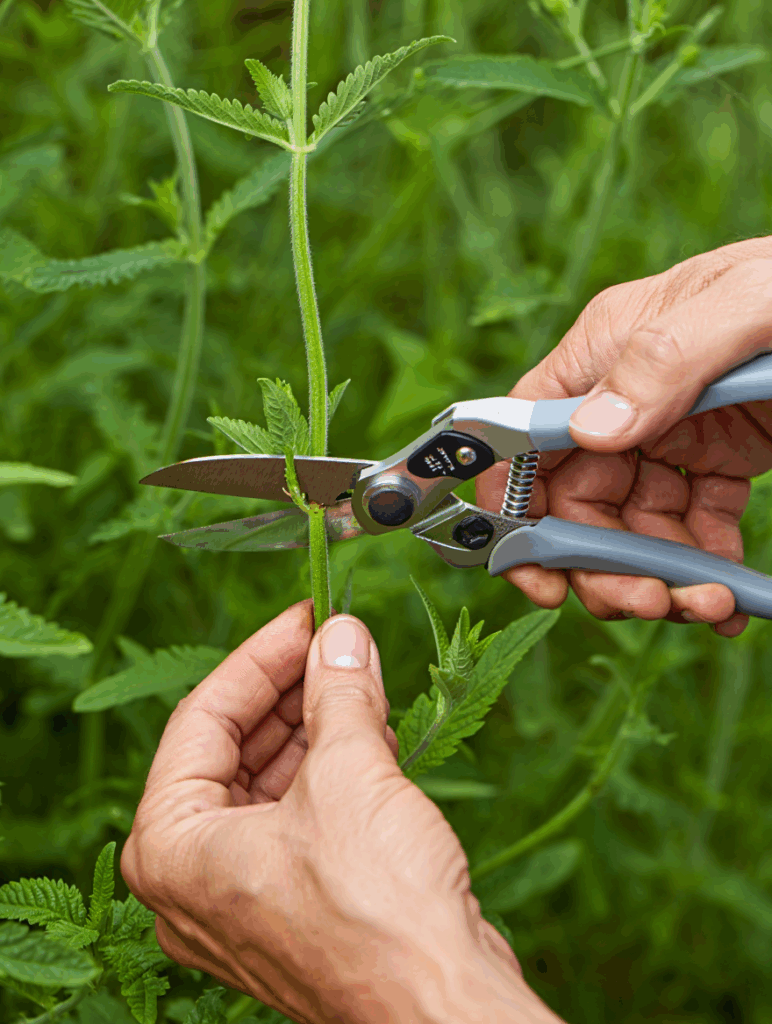
If you already have a healthy clump, September is the moment to make more. Snip non-flowering tips about four inches long, remove the lower leaves, and slide them into a pot of gritty compost. I like to place several around the rim of the same pot—just be sure the leaves don’t touch, so there’s plenty of air between them.
Over the cooler months they’ll settle in quietly, and by the time spring returns, you’ll have a collection of strong young plants to spread through beds and borders. Come summer, they’ll be alive with pollinators and you’ll be glad you multiplied them while you had the chance.
3. Lavender
Lavender is one of the easiest plants to multiply, and September is the perfect time to do it. By now, the stems have started to harden near the base while staying soft at the tips—a stage known as semi-hardwood. This is exactly when cuttings root most successfully.
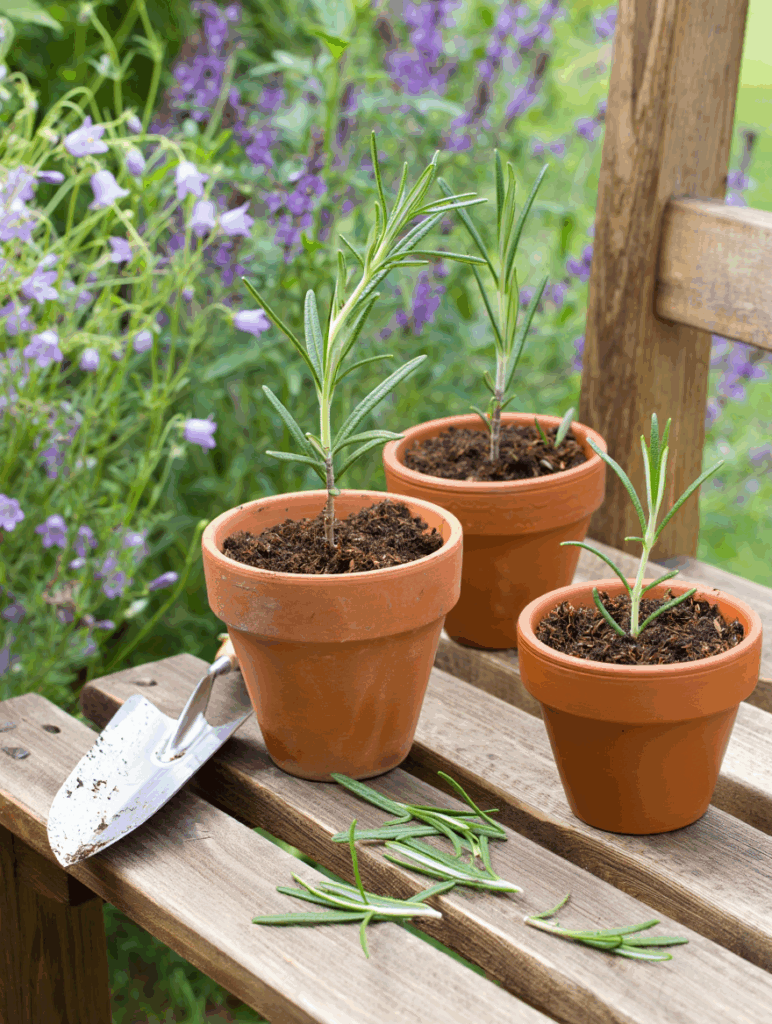
Take a few short shoots, about three inches long, from healthy growth that hasn’t flowered. Strip off the bottom leaves and slide the stems into a light, sandy compost. The goal is excellent drainage, since lavender will rot if it sits in heavy, wet soil.
Keep the pots in bright light and give just enough water to stop them from drying out. They may not show much above the soil this fall, but under the surface, roots will be forming. By spring, you’ll have a new batch of lavender ready to plant out—more fragrance, more flowers, all for free.
4. Salvia
Salvias are a favorite of mine because they’re generous with color and usually beloved by bees and hummingbirds. The good news is they’re also very straightforward to propagate in September, when the stems are at the semi-ripe stage—firm at the base but still soft enough at the tip to root easily.
The best cuttings come from non-flowering shoots. Take pieces about 3–4 inches long, cutting just below a node.
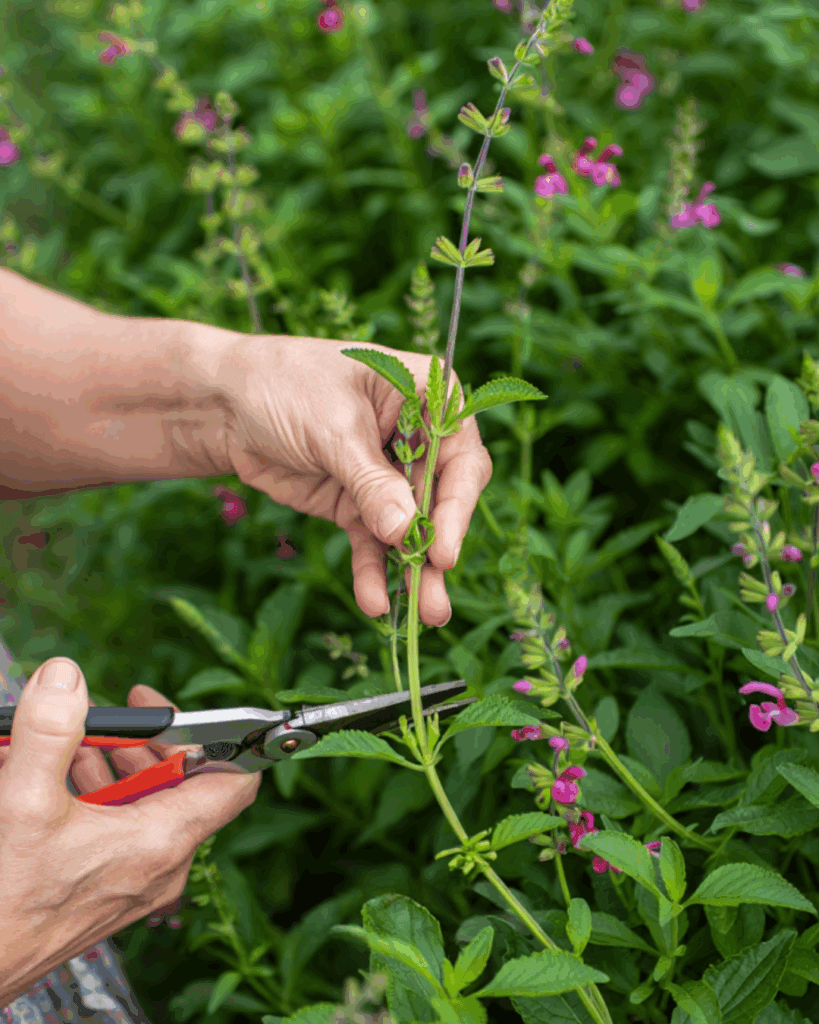
Strip away the lower leaves, and if the top leaves are large, trim them in half to reduce water loss. Plant the cuttings into a gritty, free-draining mix such as compost blended with perlite or sharp sand. Salvias dislike soggy conditions, so good drainage is essential.
Keep the pots in bright, indirect light and water sparingly—just enough to prevent the mix from drying out. Over the cooler months, they’ll gradually put down roots. By spring, you’ll have compact young plants ready to be potted on or planted out, ensuring plenty of blooms and pollinator activity next summer.
5. Fuchsia
Fuchsias are one of the easiest plants to propagate, and September offers a last chance before growth slows down. While many people enjoy the flamboyant two-tone varieties, I’ve always had a soft spot for the simpler, single-colored blooms that slip seamlessly into a cottage-style border.
To propagate, take 3–4 inch cuttings from non-flowering shoots, making a clean cut just below a node. Remove the lower leaves, and if you like, dip the cut end into rooting hormone to boost success rates. Insert the cuttings into a pot of free-draining compost mixed with sand or perlite.
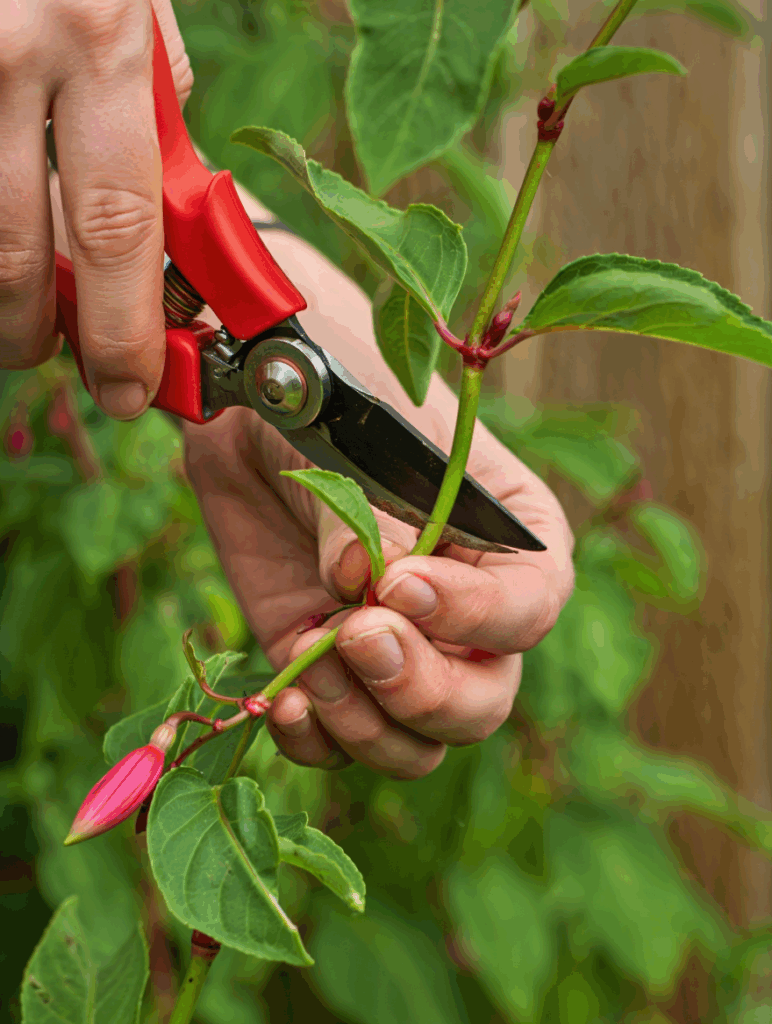
Humidity is the secret to rooting fuchsias. A greenhouse bench works well, but you can also cover the pot with a clear plastic bag or place it in a propagator to hold in moisture. Keep the soil just damp, not wet. Within a few weeks, the cuttings will start forming roots, and by spring, you’ll have a collection of bushy young fuchsias ready to overflow from baskets or brighten garden beds.
6. Camellia
Camellias are slower to propagate than many other shrubs, but they’re worth the wait for their glossy evergreen foliage and early spring flowers. September is an excellent time to take semi-ripe cuttings, when this year’s shoots are beginning to firm up but still have some flexibility.
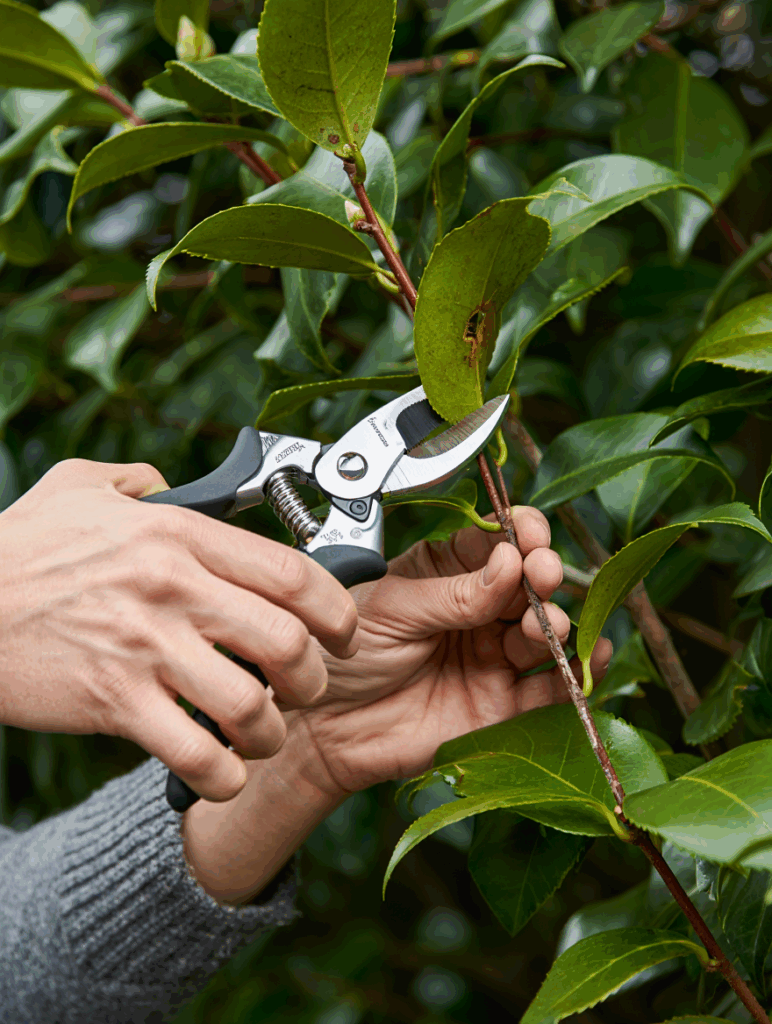
Select stems about 6 inches long from healthy growth. Remove all but the top pair of leaves, and if those leaves are large, cut them in half to reduce transpiration. Dipping the base in rooting hormone will increase your chances of success. Insert the cuttings into a mix of equal parts peat-free compost and sharp sand or perlite, making sure the pot has excellent drainage.
Camellia cuttings take time—anywhere from two to four months to show root development. During this period, keep them in a shaded, sheltered spot and maintain even moisture without waterlogging. By late winter or early spring, you should start to see new growth, which is a sign roots are forming. Once established, they’ll grow into long-lived shrubs that reward your patience year after year.
7: Rosemary (Salvia rosmarinus)
Rosemary is one of the easiest herbs to multiply, and September is an excellent time to do it. By early fall, the stems are semi-ripe—woody at the base but still flexible at the tip—which makes them perfect for cuttings. Taking a few now means you’ll have a fresh supply of plants to replace older, woody specimens or to share with friends.
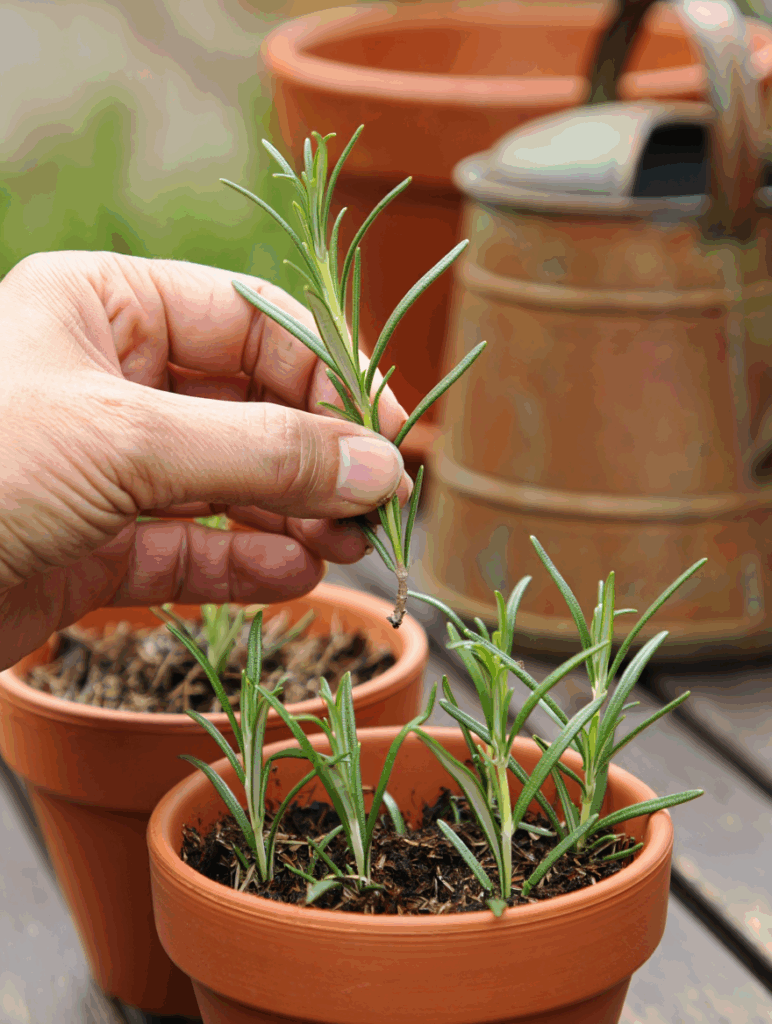
Choose healthy, non-flowering shoots about 3–4 inches long. Cut just below a node, then strip off the lower leaves to leave a clean stem. Dip the base in rooting hormone if you have it, and insert the cuttings into a free-draining mix of compost and sand or perlite. Rosemary won’t tolerate heavy, soggy soil, so good drainage is key.
Keep the cuttings in bright light, ideally on a sunny windowsill or in a sheltered cold frame, and water only enough to keep the soil slightly moist. Over the cooler months, roots will begin to form. By spring, you’ll have sturdy young rosemary plants ready to move into the garden or into larger pots—perfect for edging a kitchen path, filling containers, or snipping fresh sprigs straight into your cooking.
9. California Lilac (Ceanothus)
Few shrubs deliver such reliable impact as the California lilac. With its clouds of blue or lilac blossoms in spring and ability to thrive in hot, dry sites, it’s a standout in low-maintenance gardens. However, older plants often become woody and short-lived, which makes propagation an important part of keeping them going.
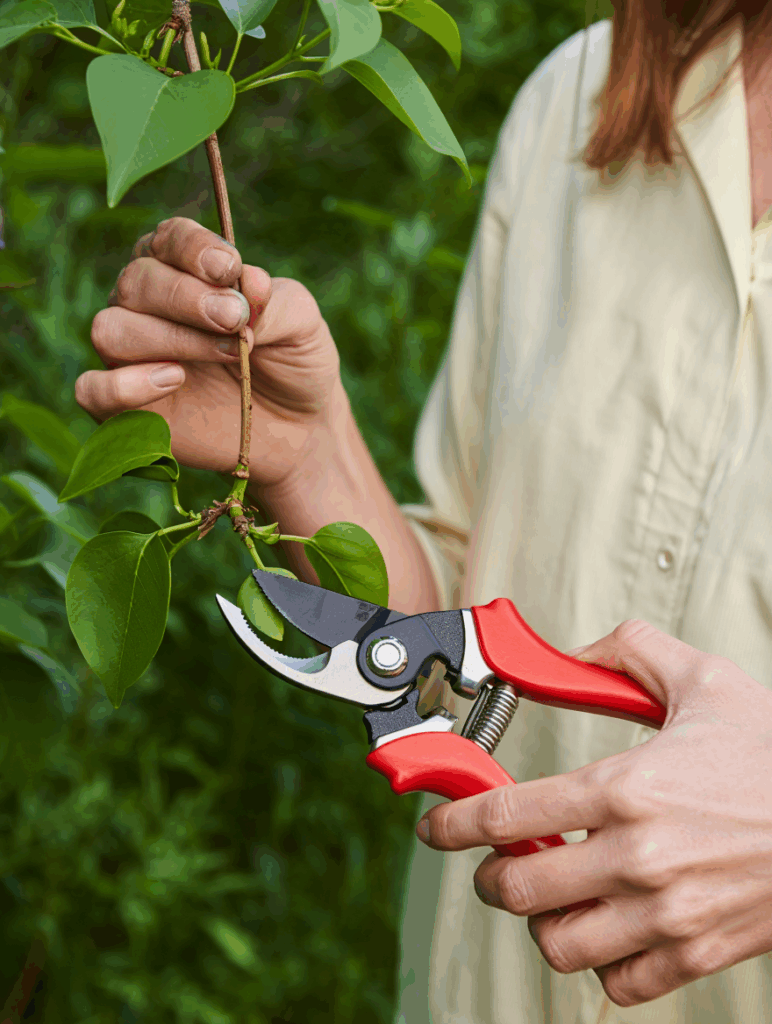
September is a prime time to take semi-ripe cuttings. Choose 4–6 inch pieces of current-season growth that are firming up at the base but still soft at the tips. Remove the lower leaves and, if desired, dip the base in rooting hormone. Plant them into a pot filled with gritty, free-draining compost—adding sand or perlite helps prevent the waterlogging that Ceanothus especially dislikes.
These cuttings are not fast to root; it may take several months before they’re ready to pot on. Keep them in a bright but sheltered spot and water sparingly. Too much moisture is the most common cause of failure. With patience, you’ll have healthy young shrubs that will eventually take over from older, leggy plants—ready to give you another decade or more of dazzling blue flowers.
9. Butterfly Bush (Buddleja davidii)
Butterfly bush earns its name honestly—few plants attract pollinators quite so reliably. With tall spires of bloom that carry on into fall, it’s both a showstopper and a workhorse in the garden. And because it grows so vigorously, it’s one of the easiest shrubs to propagate in September.
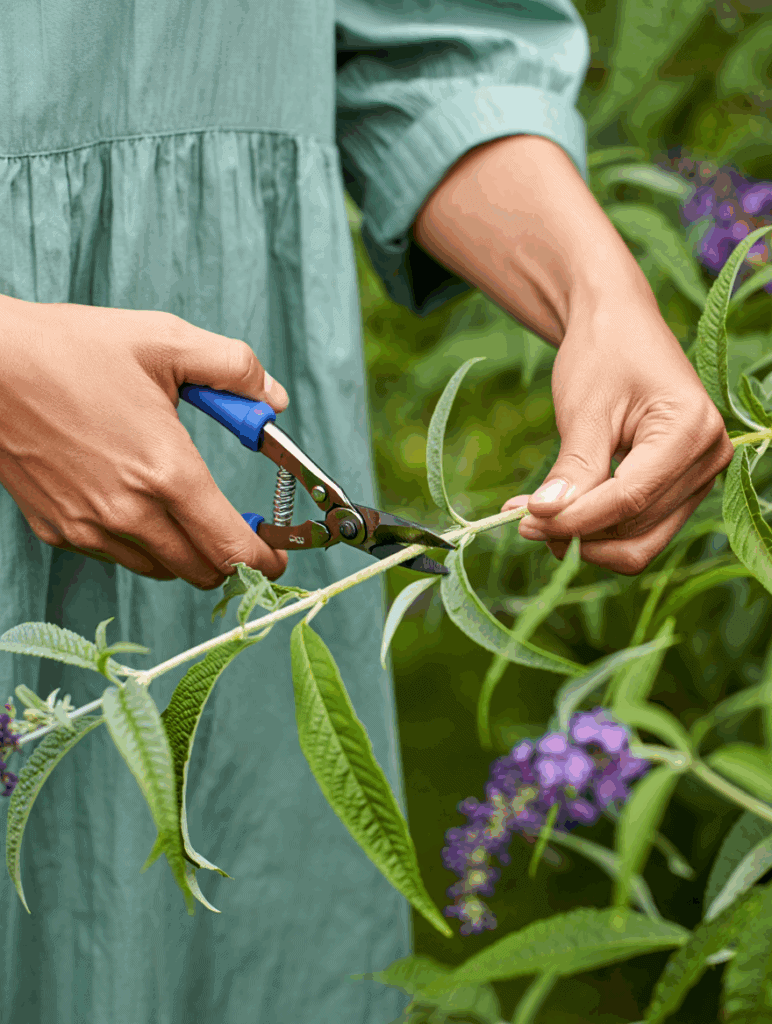
For cuttings, select 4–6 inch shoots from new, non-flowering growth. These stems are still supple enough to root quickly but strong enough to handle handling. Remove all but the top two or three leaves, then insert the bare end into a free-draining compost mix enriched with sand or perlite. Keep the pot evenly moist but never soggy, and place it somewhere warm and bright but out of direct, scorching sun.
Given the butterfly bush’s natural speed, cuttings usually root within a few weeks. Keep them under cover over winter—either in a cold frame or an unheated greenhouse—before planting them out in spring. By then, they’ll be well established and ready to take off, filling your garden with color and nectar the following summer.
10. Hydrangea (Hydrangea spp.)
Hydrangeas are among the most beloved shrubs, prized for their oversized blooms that last long into late summer. Once you’ve found a variety you love, propagation is the best way to expand your collection—more reliable than seed, and faster too. September is an ideal time because the stems are semi-ripe: firm at the base but still flexible at the tips, which makes them perfect for cuttings.
Look for fresh, green shoots that haven’t flowered, and cut pieces about 4–6 inches long. Trim just below a node, and strip off the lower leaves to expose the stem.

Dip the base in rooting hormone if you like, then plant the cuttings into a gritty, free-draining compost. Hydrangeas root best when humidity is kept high, so I often slip a clear plastic bag over the pot or place it in a propagator to keep the air moist.
Roots usually form within a couple of months. Through winter, the cuttings will rest, and by the following spring, you’ll have sturdy young hydrangeas ready to pot up or move into the garden. Over time, they’ll reward you with those iconic, full-bodied blooms—whether in shades of blue, pink, white, or every hue in between.

Written By
Amber Noyes
Amber Noyes was born and raised in a suburban California town, San Mateo. She holds a master’s degree in horticulture from the University of California as well as a BS in Biology from the University of San Francisco. With experience working on an organic farm, water conservation research, farmers’ markets, and plant nursery, she understands what makes plants thrive and how we can better understand the connection between microclimate and plant health. When she’s not on the land, Amber loves informing people of new ideas/things related to gardening, especially organic gardening, houseplants, and growing plants in a small space.
